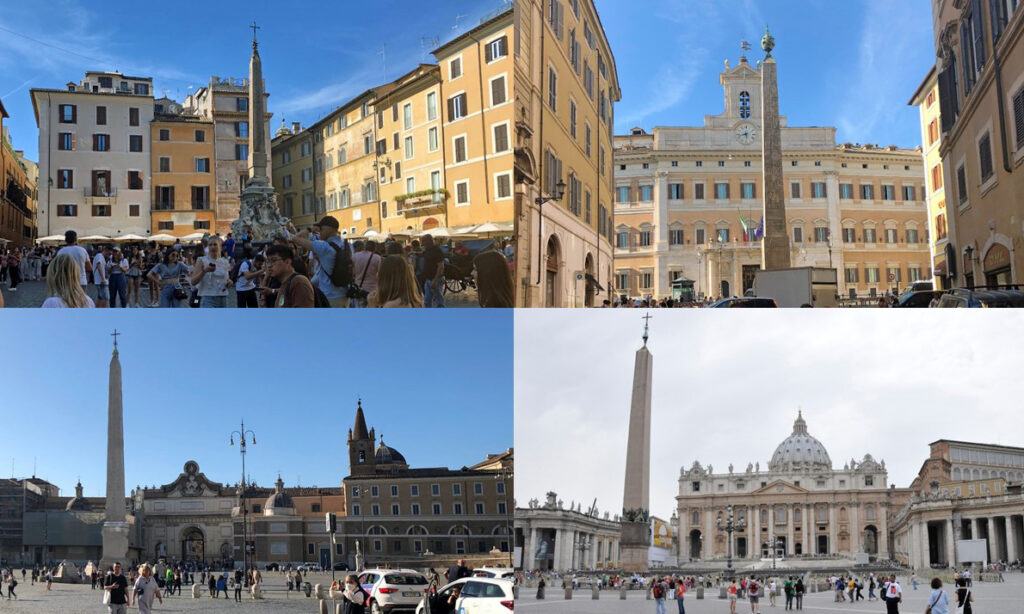Today, in the continuing series about Rome, we look at its obelisks, eight of which have connections to three religious traditions.
More than 4000 years ago, Egyptians began carving obelisks, weighing up to four hundred tons and up to 150 feet tall, from single blocks of granite. Egyptian temples featured two matching obelisks at the entrances, their gradually sloping sides and pyramidal tops symbolizing the divine connection between Egyptian pharaohs and the sun god. When the Romans gained control of Egypt in 30 B.C., they began taking down the obelisks and transporting them on specially built ships to Rome, where they re-erected them with an ingenious system of ropes and pulleys. The first obelisk taken to Rome was erected by Emperor Augustus at the center of Circus Maximus, symbolizing the divine connection between Augustus and the Roman gods. After the fall of the Western Roman Empire, all but one of the Egyptian obelisks eventually toppled and broke apart.
Beginning in the sixteenth century, popes restored and moved eight obelisks brought from Egypt and topped them with Christian crosses and symbols of the pope. The best known is the 84-foot-tall obelisk now in St. Peter’s Square, the only one that never toppled. The largest Egyptian obelisk, about 150 feet tall and the last to be brought to Rome, is now located across from the Archbasilica of Saint John Lateran. Another Egyptian obelisk is now located in Piazza del Rotonda, just outside Rome’s famous domed Pantheon. Others are located in Piazza de Monte Citorio, Piazza di Santa Maria sopra Minerva, in front of the Palazzo Massimo alle Terme and at the Villa Celimontana. Five other obelisks in Rome, including the one in Piazza Navona, were created by Romans using Egyptian models. The next time you visit Rome, you might enjoy a walking trip to find its obelisks.
